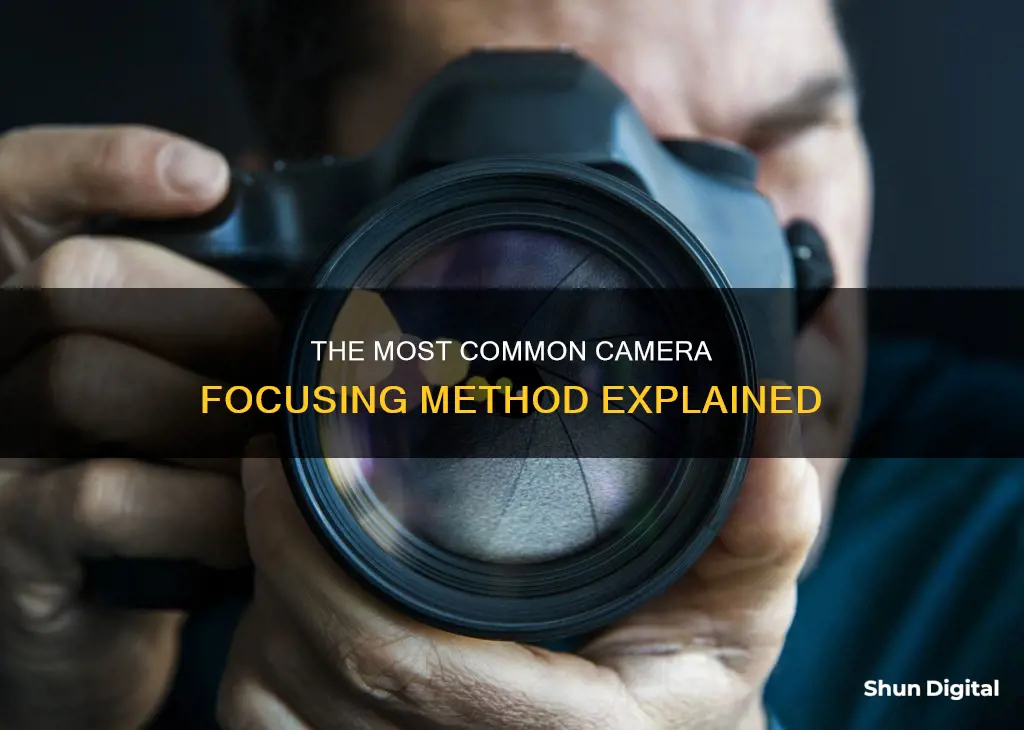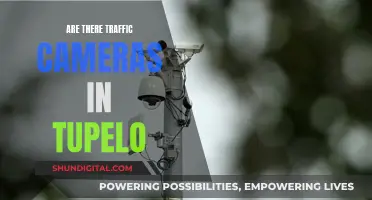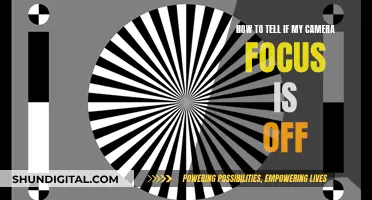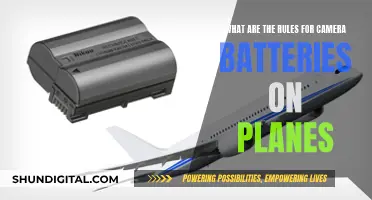
Focusing is one of the most critical skills a photographer needs to learn. It is the process of making adjustments to the lens to find the maximum resolution, sharpness, and contrast for the chosen subject. There are two ways of focusing: manual and autofocus.
Manual focusing is typically used in genres where the photographer has plenty of time, such as still life, landscape, portrait, or macro photography. It is also preferred when there isn't enough light for the autofocus system to work effectively, or when the photographer wants to have more control over the focus.
Autofocus, on the other hand, is useful for quick focus and is typically used for fast-moving subjects such as wildlife, sports, or action photography. It is also generally preferred when the subject is unpredictable, or when the photographer doesn't have enough time to adjust the focus manually.
Most modern cameras offer at least three choices when it comes to the focusing method: AF-S (single-shot autofocus), AF-C (continuous autofocus), and manual focus.
| Characteristics | Values |
|---|---|
| Focusing method | Autofocus (Automatic focus) or Manual focus |
| Autofocus | The camera system drives a motor to move elements in the lens to change focus |
| Manual focus | Need to turn a ring or similar mechanism on the lens |
| Autofocus types | Phase detection and contrast detection |
| Phase detection | Fast and good at tracking moving subjects; Prone to errors and internal misalignment issues |
| Contrast detection | Requires the camera to process more data, which takes longer; More precise |
| Autofocus modes | Continuous-servo (AI Servo or AF-C) and Single-servo (One-Shot or AF-S) |
| Continuous-servo | Camera continuously adjusts focus |
| Single-servo | Camera acquires focus and doesn't readjust until the button is released |
| Autofocus area modes | Single-point autofocus, dynamic autofocus, and auto-area autofocus |
| Single-point autofocus | Precise way to focus on the subject, especially if it covers a small part of the frame |
| Dynamic autofocus | Multiple focus points selected at the same time; Not the best option when precision is required |
| Auto-area autofocus | Camera chooses the focus area; Struggles in low-light situations |
What You'll Learn

Manual vs Autofocus
The choice between manual and autofocus depends on the photographer's needs and shooting conditions. Autofocus is generally faster and more convenient, while manual focus offers greater creative control.
Autofocus
Autofocus allows the camera to set the focal point, ensuring a clear shot. It is generally faster than manual focus, although its speed depends on the camera and lens type. Autofocus has features such as tracking, which locks focus on a subject and follows it through the frame, making it ideal for capturing moving subjects. Autofocus also has face/eye detection, which is useful for vlogging and documentaries.
However, autofocus relies on contrast to identify objects, so it struggles in low-light conditions or when there are many objects in the scene. Autofocus is also not very precise and can be easily distracted by foreground objects.
Manual Focus
Manual focus gives the photographer more creative control as they can determine the focal point. It is ideal for situations where autofocus may struggle, such as in low-light conditions or when shooting through glass or fences. Manual focus is also more precise and reliable, allowing the photographer to carefully select the focal point in a chaotic scene.
However, manual focus is generally slower than autofocus, making it less suitable for capturing moving subjects or fast-paced action scenarios.
Neither autofocus nor manual focus is universally superior. The choice depends on the specific needs and shooting conditions of the photographer. Autofocus is generally recommended for most situations due to its convenience and speed, while manual focus is reserved for scenarios where autofocus struggles or when more creative control is desired.
Choosing the Right Camera Profile for Your RAW Photos
You may want to see also

Autofocus Area Modes
Single-Point AF Area Mode
Single-Point AF Area Mode lets you select a single focus point, making it ideal for static subjects or scenes where precise focus is crucial. It's a good choice for landscape and portrait photography.
Dynamic AF Area Mode
Dynamic AF Area Mode is versatile and useful for capturing moving subjects. You manually select the initial focus point, and if the subject moves, the camera uses surrounding points to maintain focus. This mode is excellent for wildlife, sports, and action photography.
Group AF Area Mode
Group AF area mode is perfect when you want to focus on a specific area with a cluster of autofocus points. It's handy for wildlife and sports photography, ensuring accurate focus on a group of subjects in a defined zone.
Auto AF Area Mode
Auto AF Area Mode is a fully automatic mode where the camera decides which focus points to use. It considers factors like subject distance, motion, and eye detection. While it's excellent for beginners, it offers less control over the focus point.
Pinpoint AF Mode
Pinpoint AF Mode is a precise mode that uses contrast detection autofocus to focus on a small portion of the scene. It's designed for stationary subjects like landscapes, architecture, and product photography.
3D Tracking
3D Tracking is an intriguing mode that measures the distance between the subject and the camera for accurate focus locking. It also uses predictive focus tracking, anticipating the subject's movement to lock focus accordingly.
Each autofocus area mode has its advantages and suits specific photography scenarios. By understanding and utilising these modes effectively, you can enhance your photography skills and capture sharper, more focused images.
Action Camera Batteries: How Long Do They Really Last?
You may want to see also

Continuous Autofocus
With continuous autofocus, the camera continually checks the distance between itself and the subject, making focus adjustments each time it detects a change. This process continues until the photographer releases the shutter. This mode is predictive, as the camera's algorithm calculates the direction and speed of the subject's movement, helping to reduce errors and counter "shutter lag".
While continuous autofocus is incredibly useful, it does have some limitations. It is more challenging to predict the movement of a bird or a cheetah, for example, than it is to track a car or a person walking. To address this, camera manufacturers have developed variations of continuous autofocus modes, such as Animal Eye AF, Vehicle AF, and Deep Learning AF.
When using continuous autofocus, it is essential to ensure that the camera indicates that the lens has finished refocusing before capturing the image. Additionally, photographers should be aware that this mode can consume more battery power than other autofocus modes.
Overall, continuous autofocus is a valuable tool for photographers looking to capture clear, sharp images of moving subjects.
Focusing Night Owl Cameras: Tips for Clearer Vision
You may want to see also

Manual Focus
When to Use Manual Focus
How to Use Manual Focus
To use manual focus, first locate the focusing mode switch on your camera or lens, usually labelled "AF/MF", and switch to "MF". Then, find the focus ring, which is often near the middle of the lens barrel for prime lenses, or near the end for zoom lenses.
Look through your camera's viewfinder and twist the focus ring to one side. You should see the focus shift as different areas of the scene go in and out of focus. Continue turning the ring until your main subject comes into focus.
Benefits of Manual Focus
Limitations of Manual Focus
While manual focus offers greater control and precision, autofocus is more convenient and faster in most cases. Autofocus is ideal for genres that require quick reactions and the ability to track moving subjects, such as sports, wildlife, and photojournalism.
In conclusion, manual focus is a valuable skill for photographers to have, especially in situations where autofocus struggles or when more creative control is desired. However, it is important to know when to use manual focus and when to switch to autofocus to capture the desired shot.
Converting to Black and White: Camera Raw Techniques
You may want to see also

Autofocus Single
Single autofocus mode (AF-S / One-Shot AF) is the most basic autofocus option available. By selecting the single autofocus, your camera will lock the focus on the subject that you want to photograph.
AF single is the best AF mode for static subjects, such as portraits, macro, and architecture, since there’s no need for tracking or covering a wide area. It is also useful for long exposure images to ensure that your focus is correct.
Single autofocus is one of the least intelligent AF modes. If you’ve acquired focus on your subject and it moves, the camera won’t adjust focus to compensate. You’re locked into using your current focus, and if your subject moves, you’ll have to focus again.
Single autofocus in camera nomenclature:
- Nikon: AF-S Mode
- Canon: One-shot AF
- Sony: Single-shot AF
- If you spend a lot of time photographing the Milky Way and other night sky objects, you’ll need to fine-tune your focus to infinity or a distant object, since the autofocus will likely miss the focus.
- Manual focus mode is usually more reliable than autofocus when shooting in low-light conditions and in some other genres like macro, architecture, and stills.
- Single AF is the most basic focus mode and the best for still subjects.
- Single-point is the best AF area for still subjects or scenes where the focus point is crucial.
- Single-point AF is the best focus area mode for still subjects. Landscape photography makes regular use of this mode, since the portions of the landscape you’re using to focus on won’t be moving.
- This focus area also gives you more accuracy when you’re shooting a portrait or image where the exact focus point is vital.
- Single AF and Single-Point AF area mode are the best focus modes for landscape photography.
Charging the Kidizoom Selfie Camera: A Step-by-Step Guide
You may want to see also
Frequently asked questions
Focus in photography is the process of making adjustments to the lens to find the maximum resolution, sharpness, and contrast for your chosen subject.
There are two types of focus: manual and autofocus. Manual focus is when you adjust the focus yourself, while autofocus is when the camera finds the focus for you automatically.
Photography focus points are zones on the camera sensor that are sensitive to changes in image contrast. These points help the camera detect where to focus.
The central autofocus point is generally the fastest and most accurate, so it's a good idea to use this whenever possible. However, you may need to use other focus points depending on your subject and their movement.







